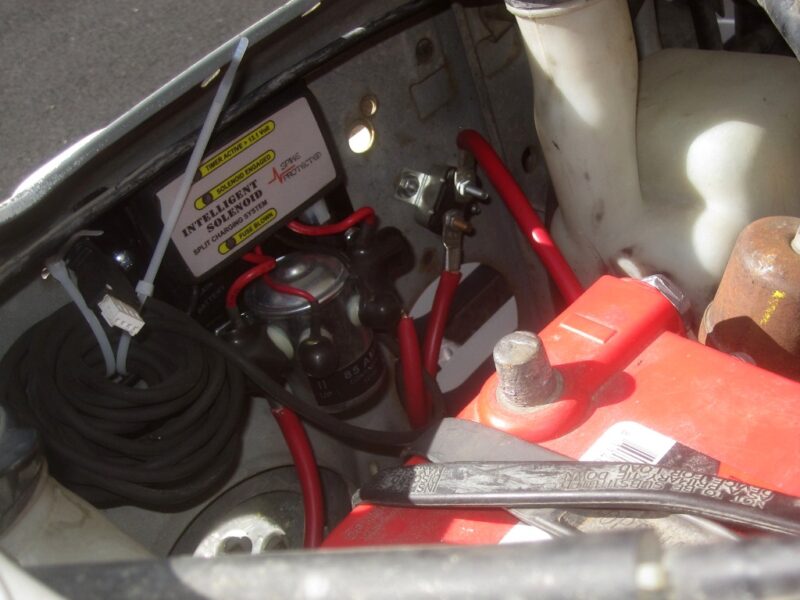
Important points in the maintenance of vehicle systems and parts:
Vehicle System/Components Service Notes
Automatic Transmission Fluid:
Check the fluid level, the engine is running and the transmission is in Park “P”. If the fluid level is low, add the vehicle-specific transmission fluid indicated in the vehicle owner’s manual or the fluid dipstick stick. For optimum performance, change the transmission fluid every 2 years, every 2,400 miles (4,000 km) or as directed in your vehicle’s owner’s manual.
Battery and Cables The
battery must be securely attached. Battery connections must be clean, well conductive and free from rust. If the battery life is 3 years or more, it must be inspected and replaced if necessary.
Belts:
Inspect V-belts and belt uniformity for tension or condition. Replace it if there are cracks, frays, sparkles, or signs of significant wear. Change the timing belt to the times specified in the vehicle owner’s manual. These are usually in timings from 60,000 to 90,000 miles (100,000 to 150,000 km). Failure to change the belt at the specified timings may cause engine failure or severe engine damage.
Cabin Air Filter: To
be changed annually. Or at a faster rate in areas with high pollutants, or in the case of inefficient heating and air conditioning.
Chassis Lubrication:
Many modern cars have permanent lubrication and do not need lubrication¸ some still need that service. Refer to your vehicle owner’s manual. Changing steering and suspension parts may need periodic lubrication.
Check Engine Light On:
If the lamp lights up while the car is in motion or remains lit, the car may have an emissions problem or a problem with the sensors, and it must be inspected. If the lamp flashes intermittently, the condition is more severe, and it must be inspected immediately to prevent damage to the catalytic converter.
Car Body Cleaning & Polishing: To
maintain the car’s glossy condition, use only washable car products, and do not use non-washable liquids. Polish the car body twice a year to maintain and protect the car paint.
Engine coolant (antifreeze): Coolant (Antifreeze)
Check the fluid level in the additional tank. Never open the radiator cap while it is hot. If the fluid level is low, add a 50/50 percent mixture of recommended antifreeze and distilled water. The coolant is changed annually in most cars.
Engine Oil and Filter:
Check the oil level with the engine idle at each fill-up of the vehicle. To extend engine life, change the oil and filter every 3 months, every 3,000 miles (5,000 km), or as recommended in your vehicle owner’s manual. Use the recommended oil and its grade.
Exhaust:
Check for leaks, damage, or breakage of the exhaust pipe fasteners if abnormal sounds and noises are present. If a problem is suspected, the problem should be checked immediately. Exhaust gas leakage can be dangerous and must be repaired immediately without delay.
Fuel Filter:
Check the filter at every oil change. Replace it if it is clogged or contaminated with water, or every year in cars that have a carburetor. On cars with a fuel injector, change it every two years or every 24,000 miles (40,000 km).
Hoses:
Check the rubber tubes at every oil change, and replace them if there are leaks, loss of elasticity, cracks, rust, swelling, or blockages.
Lights:
Change the bulbs immediately in the absence of lighting, check the fuse first.
Power Steering Fluid:
Check the power steering fluid while the engine is warm (at operating temperature). If the fluid level is low, add a fluid of the same type as the fluid used. In the event of frequent low fluid level. Check for leaks in the system, and change the fluid if it becomes contaminated.
Steering and Suspension:
Inspect the system annually, including shock absorbers, struts, and chassis parts, such as ball joints, shaft ends, and related parts. Replace if there is any leakage, damage, poor quality installation of parts. Symptoms of steering damage include abnormal tire wear, and excessive sway after getting into bumps or bumps.
Tire Inflation and Condition:
Inspect all tire inflation, including the spare tire, at every oil change. Inspect the tread condition for abnormal wear or bruising on the tire wall. Inflate and maintain the tire at the pressure recommended on the door decal, dashboard sticker, or owner’s manual rather than what is written on the tire wall (this is the maximum pressure that the tire can withstand and is not recommended). Change the tire if there is high tire wear or tire damage.
Windshield Washer Fluid:
Check the fluid level monthly. Some cars have two tanks. Do not use water, use only cleaning fluid.
Wiper Blades Condition: Replace
every six months or if they are damaged, cut, stuck, or wiping irregularly.
There are no reviews yet. Be the first one to write one.

